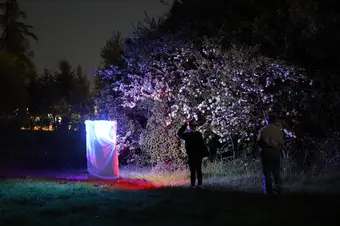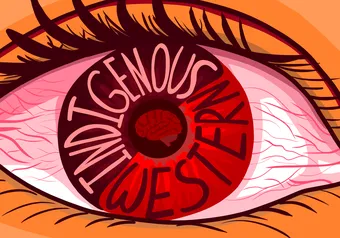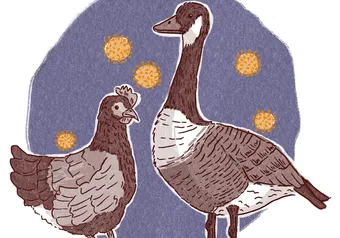As the sun sets on the trees of Vancouver’s Lower Mainland, two UBC researchers set up their work in the middle of a grassy field. Plastic piping forms an upright frame, fitted with a white sheet. As dusk turns into night, an LED lights up the sheet and the wait for fluttering begins.
Hannah Anderson, the second year master’s student leading the research, explains that it’s a trap to attract moths.
“We individually take all the moths off the trap, collect them in little sample cups, and then take them back to the lab.”
Anderson and Eva Burghardt, a recent UBC graduate, spent their nights over the summer collecting moths as part of research in UBC’s Plant-Insect Ecology Lab seeking to better understand how they contribute to pollination.
BC is home to some 2,000 species of moths, far outnumbering their more popular cousins, butterflies, of which there are fewer than 200 species. Moths and butterflies have similar lifestyles — feeding on nectar, mating and laying eggs — meaning moths have the potential to be important pollinators. However, moths perform all their behaviors by moonlight, out of the eyesight of diurnal animals like us.
Perhaps this is one of the reasons they receive less attention than their daytime counterparts — many are familiar with “save the bees,” yet one would be hard pressed to find the same enthusiasm for moths.
When it comes to conservation, moths are prone to the same concerns as daytime pollinators, such as declining biodiversity, with the added impact of artificial light pollution. A 2016 study found that artificial lights disrupt normal moth flight patterns, potentially hindering their ability to perform their ecological roles effectively.
With moth abundance declining in the last 50 years, the task of learning why falls to researchers brave enough to venture into the dark for answers.
“Right now, [research on nocturnal pollination] is just a drop in the bucket compared to research on daytime pollinators,” Anderson said.
Her research focuses on how moths pollinate BC’s strawberries and blueberries. Researchers set up light traps — large white tarps lit with LEDs — and placed them in agricultural lands around the Lower Mainland.
The researchers emphasized the challenge of working through the night, part of why research on moths is so limited.
“No one wants to go out all night and look at nocturnal pollination,” joked Burghardt about the research process.
In addition to the challenge of being out dusk til dawn, the team also faced a number of specific incidents that made their research unexpectedly difficult.
“There were definitely times where we were being kind of threatened by other farmers and they destroyed our trap. But we also had a rock thrown at by someone who thought we were trespassing at some farm,” said Anderson.
Clearly, awareness of the work was low, yet the team was undeterred.
Back in the lab, Anderson shows the hard-won results. On a microscope, she points out a small round speck of purple: blueberry pollen.
After collecting moths, the team works to collect pollen samples from each specimen by blotting the insects with a gel and then laying them onto microscope slides. By then counting the pollen particulate on each slide, they'll be able to determine which moths are pollinating and where they’re doing it. They’ll also be able to gauge the biodiversity of moths during different seasons by counting numbers of individual species collected throughout the study.
It’s painstaking work, but the pair recounted it with enthusiasm, discussing between laughs the process of tapering off energy drinks as they became more used to staying up all night.
Supplemented by caffeine, they were motivated by their passion for how their work can inform agricultural change.
“We also want to better inform farm management practices — a lot of farms will spray pesticides at night, which is ironic because it’s done to avoid spraying the pollinators," said Anderson.
Better practices, both within and beyond agriculture, involve connecting with the public and farmers to inspire more appreciation for our nighttime pollinators.
In May, Anderson took to the UBC farm for the UBC Biodiversity Days event, connecting with attendees about her research.
“Often when I bring up the fact that moths do a lot of pollinating and they’re super important pollinators, people are super shocked to hear that.”
Highlighting the role of moths in these ecosystems is integral to restructuring the view many have of them as pests. Anderson hopes her research could pave the way for new practices that account for all ecological players — not just the ones that move in the daylight.
First online
Share this article








